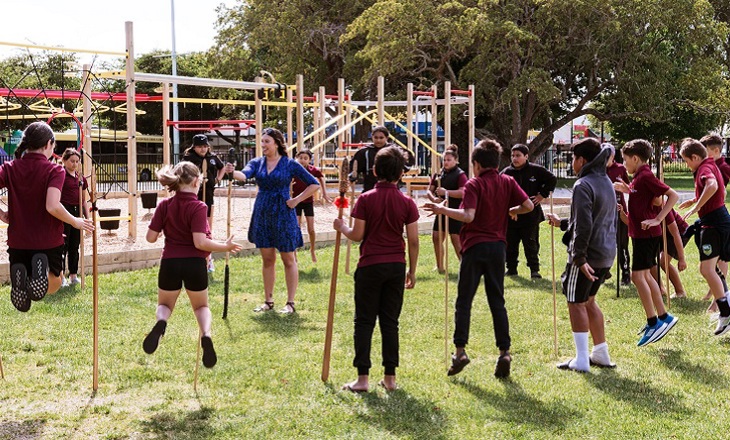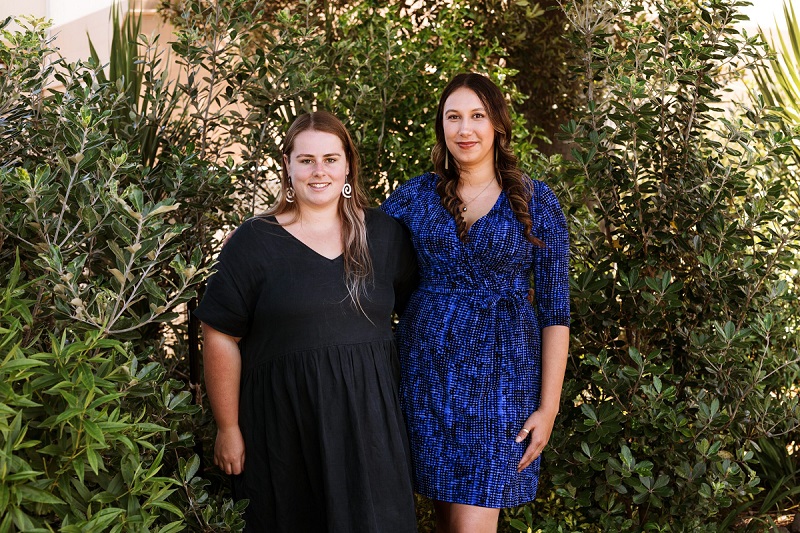Encouraging teachers to look through the lens of tamariki
Encouraging teachers to look through the lens of tamariki
in the Bay of Plenty

Photo credit: Alice Veysey
A key focus of Healthy Active Learning is supporting teachers and kaiako to be confident in delivering the health and physical education and hauora curriculum. Local Healthy Active Learning teams provide support to teachers, schools, tamariki, and their communities that best suit them. Sport NZ spoke with two kaiako at Te Kura o Maarawaewae Greerton Village who have worked closely with the Healthy Active Learning team at Sport Bay of Plenty to deepen their teaching practice and enhance the experience of ākonga in PE and physical activity as a result.
Being supported in existing practice
Hauora and being active is at the heart of kaiako Ricci Clark’s bilingual classroom at Te Kura o Maarawaewae Greerton Village School in the Bay of Plenty. Every day starts with kapa haka and ākonga are outside to move their bodies every hour. She’s always looking for new kēmu (games) to try and Pūrākau (storytelling) and Te Ao Māori values are imbedded across all learning areas - including Health and Physical Education (HPE).
As a teacher she says she has always been passionate about showing how we can bring “teachings from our tipuna” into different learning areas, including physical education, and has appreciated how Healthy Active Learning has validated and supported her practice.
“The Healthy Active Learning team has come in and shown how you can look after this facet of your taha wairua, how you can talk to your kids and get them thinking about their kare ā-roto, their emotions,” she says.
“They’ve encouraged us to look through the lens of a child and ask what this would like if I was maybe not as capable or confident, what would my peers think of me, how am I going to feel in that situation?
“Just the simple way that they explained it to our Kaiako, I think our teachers just grabbed it and went ‘oh this is doable’.”
“So much learning come out of physical activity, but sometimes we don’t value it because it looks like they are just playing around,” she says.
“I want people to see the value in it because I see the results. It is right there in front of me every day. My kids are happy, they are attending school pretty much every day – it is hardly ever that I have kids away. We love each other, we hug each other, we have fun together. We are like whānau.”

Understanding the value of physical activity to learning
Ricci’s colleague Tori says since the support of Sport Bay of Plenty’s Healthy Active Learning team has transformed the way she delivers PE and physical activity in her classroom.
That has included in-class guidance during PE lessons, help with planning the HPE curriculum, and two offsite hauora PLD days for teachers in the region.
She says she “hated” PE when she was at school and so, not wanting to inflict that experience on her students, did not prioritise it in her own classroom. But her approach, and understanding, of what it means to be active, has now changed. To put it simply, she has learnt that physical education is not just about learning how to throw a ball.
“Healthy Active Learning has given me a more meaningful way to incorporate games and for it to be seen as Health and Physical Education,” Tori says.
Tori says she has also been supported to integrate physical activity into other learning areas.
“One of the first meetings we sat down and thought of different ways we could adapt one game. You can do it as a warm-up in your writing, a warm-up in your maths. I hadn't really thought about that,” she says.
“And for the children who really like PE but dislike writing, it’s a way to make writing fun as well.”
And Tori says the positive shift in tamariki’s experience is evident.
“Last year there were a few teary moments with children not wanting to participate because I was taking the approach of ‘Okay, we’re learning to shoot today, we’re learning to pass, stand in this line’. And they would drop the ball and feel embarrassed.
“This year it is different. They might giggle with a friend but they are able to laugh rather than get upset. It is because we are creating that sense of belonging and just not feeling judged. They feel more of a team.”
